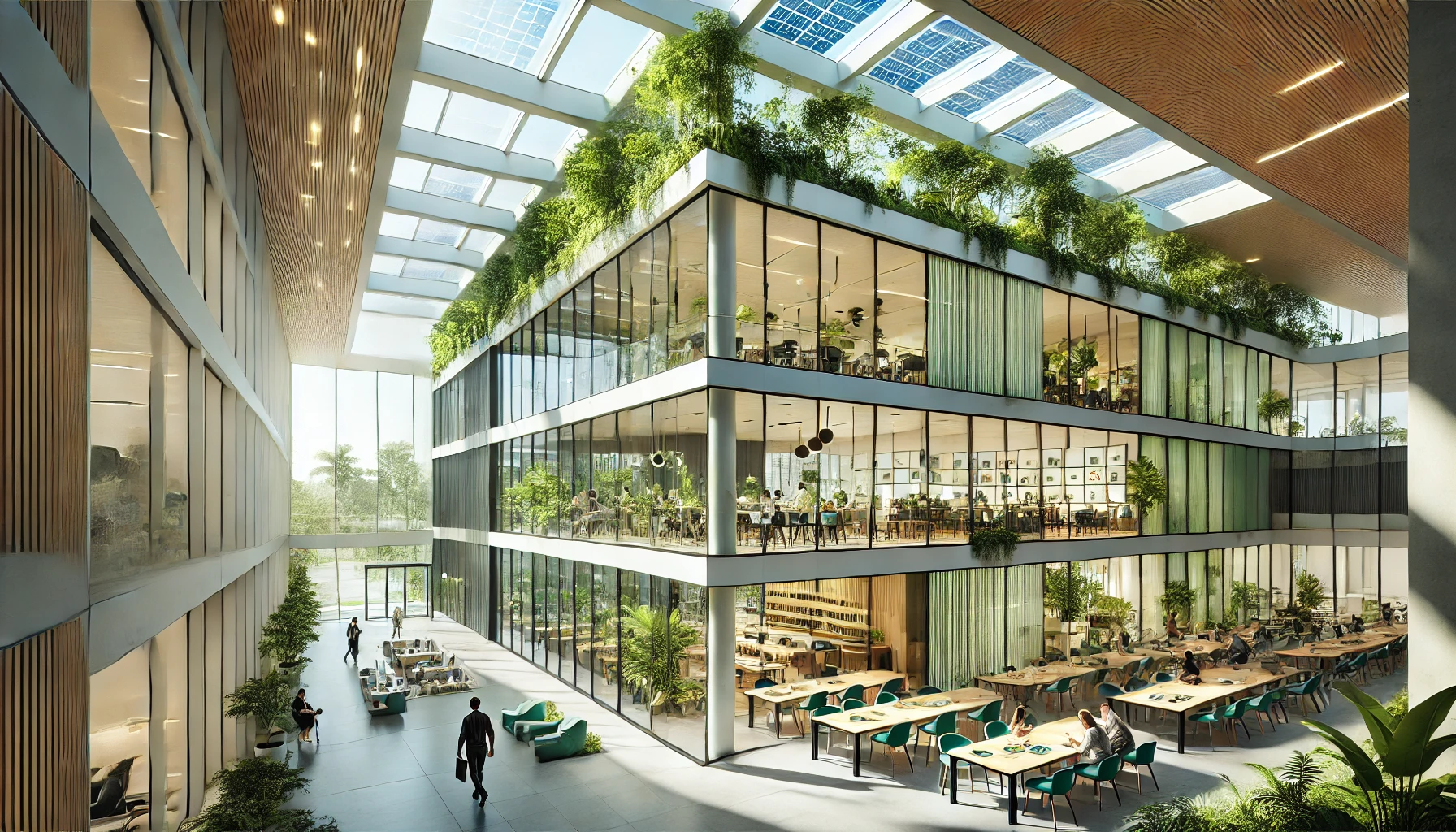In the quest for sustainable architecture, daylighting emerges as a pivotal element. Not only does it enhance the aesthetic appeal of buildings, but it also offers numerous environmental and health benefits. Let’s delve into the significance of daylighting and its role in green building design.
Understanding Daylighting
Daylighting is the practice of using natural light to illuminate building interiors. By strategically placing windows, skylights, and reflective surfaces, architects can maximize the penetration of sunlight into the spaces. This method not only reduces the dependency on artificial lighting but also creates a more natural and pleasing environment for occupants.
The Environmental Benefits of Daylighting
Incorporating daylighting into building design is a cornerstone of sustainable architecture. Here are some key environmental benefits:
- Energy Efficiency: Daylighting reduces the need for electric lighting, leading to significant energy savings. According to studies, buildings with efficient daylighting strategies can reduce their lighting energy use by up to 50%.
- Reduced Carbon Footprint: Lower energy consumption translates to reduced greenhouse gas emissions. This contributes to the overall goal of minimizing the carbon footprint of buildings.
- Resource Conservation: By relying on natural light, the demand for electricity generated from fossil fuels decreases, conserving valuable natural resources.
Health and Well-being Advantages
Daylighting is not only beneficial for the environment but also has profound impacts on human health and well-being. Here’s how:
- Enhanced Mood and Productivity: Exposure to natural light has been linked to improved mood and increased productivity. Studies have shown that workers in daylight-illuminated environments report higher levels of satisfaction and engagement.
- Better Sleep Patterns: Natural light helps regulate circadian rhythms, leading to better sleep quality. This is particularly important in workplaces and educational institutions where individuals spend a significant portion of their day.
- Reduced Eye Strain: Properly designed daylighting can reduce the occurrence of glare and shadows, minimizing eye strain and discomfort.
Implementing Daylighting in Green Building Design
Architectural Strategies for Daylighting
Effective daylighting requires careful planning and design. Here are some strategies architects use:
- Orientation and Placement: Buildings should be oriented to maximize the benefits of natural light. South-facing windows are ideal for capturing sunlight throughout the day.
- Window Design: Large, strategically placed windows can flood spaces with natural light. However, it’s crucial to balance window size with insulation needs to avoid heat loss.
- Use of Skylights: Skylights are an excellent way to introduce natural light into the core areas of buildings, reducing the need for artificial lighting even in the most interior spaces.
- Reflective Surfaces: Light-colored walls and ceilings can reflect natural light deeper into the building, enhancing the distribution of daylight.
Technological Enhancements
Modern technology offers tools to optimize daylighting:
- Light Shelves: These are horizontal surfaces placed above eye level on the inside of windows. They reflect light onto the ceiling and diffuse it throughout the room.
- Smart Glazing: Advances in glass technology, such as electrochromic and photochromic glazing, allow windows to adjust their transparency based on the intensity of sunlight, optimizing daylight entry while controlling glare and heat.
Case Studies of Successful Daylighting
The Bullitt Center, Seattle
The Bullitt Center, often touted as the greenest commercial building in the world, employs extensive daylighting strategies. With floor-to-ceiling windows and a narrow floor plan, every workspace is within 30 feet of a window, ensuring ample natural light. This design reduces energy consumption and creates a pleasant working environment.
The Edge, Amsterdam
The Edge in Amsterdam, recognized as one of the most sustainable office buildings, uses advanced daylighting techniques. Its atrium allows sunlight to penetrate deep into the building, and automated blinds adjust to optimize natural light while minimizing heat gain.
When designing a sustainable building, integrating daylighting is a crucial step toward energy efficiency and enhanced occupant well-being. By reducing reliance on artificial lighting, daylighting significantly lowers energy consumption and greenhouse gas emissions, contributing to a greener building. Furthermore, the exposure to natural light improves mood, productivity, and overall health, making it an essential aspect of modern architectural design. Embracing daylighting not only aligns with eco-friendly practices but also ensures a brighter, healthier future for all building occupants.
Tips for Effective Daylighting Design
- Conduct a Sun Path Analysis: Understand the sun’s movement relative to your building to optimize window placement and shading devices.
- Balance Daylight and Solar Heat Gain: Use appropriate glazing and shading techniques to maximize light while minimizing unwanted heat.
- Integrate Daylighting with Electric Lighting: Implement sensors and controls that adjust electric lighting based on the availability of natural light, ensuring energy efficiency.
- Consider the Building’s Function: Tailor daylighting strategies to the specific needs of different spaces within the building, such as offices, classrooms, or common areas.
Conclusion
Daylighting is more than just a design trend; it’s a vital component of sustainable architecture. By harnessing the power of natural light, we can create buildings that are not only environmentally friendly but also enhance the health and well-being of their occupants. As we continue to strive for more sustainable living and working environments, daylighting will undoubtedly play a central role in shaping the future of green building design.
Incorporating daylighting into your building projects not only benefits the environment but also improves the quality of life for those who inhabit these spaces. With thoughtful design and the right technologies, we can make the most of this natural resource, ensuring that our buildings are bright, efficient, and sustainable.

